5. LEARN SOME SPECIAL MOVES
If you are an advanced player and you've waddled all the way through this article looking for some advanced tips, we have some bad news for you: you won't find it here. This is an article for beginning chess players, and frankly, we're disturbed that it took you this long to figure it out. But for those who have learned the basics and are ready to add a little fire to the arsenal, here are some special moves to learn.
En passant
Zees ees French for "in passing." Ooh, la la, Pepe Le Pew, Jaques Cousteau. OK, enough of that. En passant is a special way for you to capture Moe's pawn. This is exactly how it always works:
- You have a pawn in the two spaces away from Moe's original pawn line-up (in other words, your pawn is in row 5).
- Moe moves a pawn TWO spaces so that it is in the square right next to your pawn.
- When Moe moved his pawn, it passed through a square in which if it had only moved one space, you could've captured it. So we pretend that he did only move that pawn one space, and you take his pawn, moving one square diagonally forward, just as if it had been a normal capture. See below for an example:
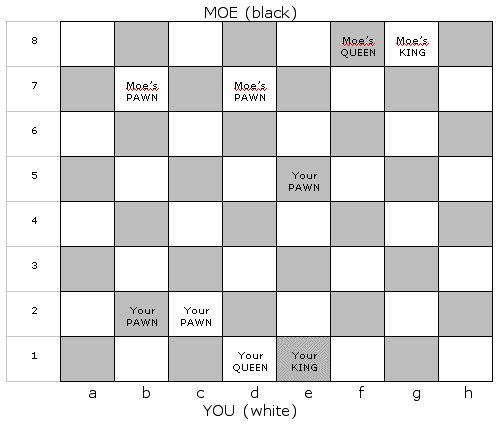
Take note of how your pawn is in the 5th row. Now if Moe moves his pawn from d7 to d5, it has to pass through d6, where you might have had the opportunity to capture it. So if you want, you can capture that pawn, even if he moves it to d5. Look below:
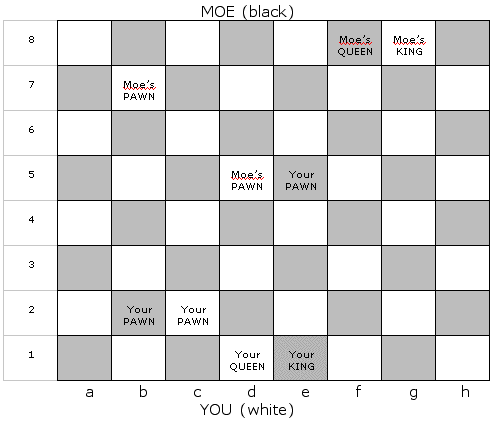
Moe moved to d5…
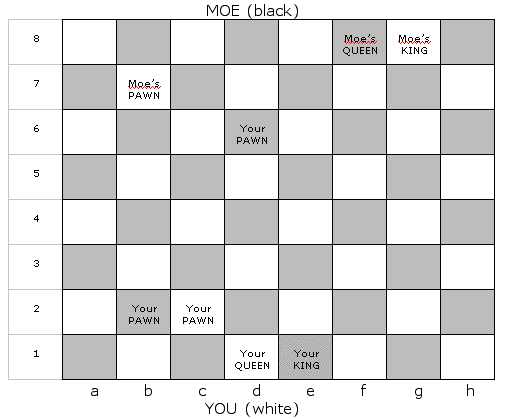
And thanks to en passant, you captured his pawn, and you moved your piece as if Moe had only moved his pawn one space. Cool, huh?
But there is a limit to this rule: if you're going to take Moe's pawn after he moved it out two spaces using en passant, you have to take it on your next immediate turn. You can't move other pieces, and then later just take his pawn away when it's directly next to yours. Of course, if Moe only moved his pawn out one space, you can attack diagonally and capture it whenever you like (unless he captures yours first).
Castling
Castling is a very useful way to protect your king and confuse your opponent, and it is also the only time you are ever allowed to move two pieces at once. It works like this: when your king and a rook (it can be either one) both haven't been moved out of their home boxes for the entire game, you move your king two spaces towards the rook, and then move the rook to the opposite side of the king. Got that? No? Well guess what… we've got another example. Let's say that it's your move and your pieces are set up as below. You're nervous that your king is so vulnerable and you want to protect it.
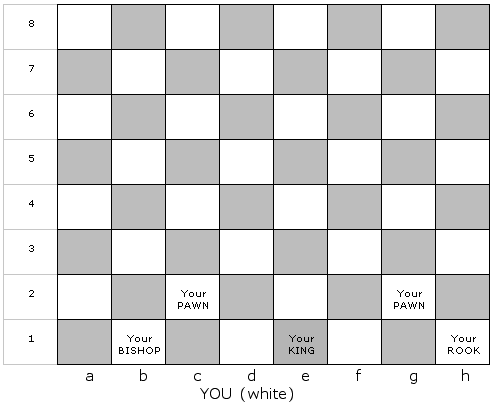
So by castling, you are allowed to move your king two spaces right (toward your rook) and move the rook around to the king to the space next to it, as below:
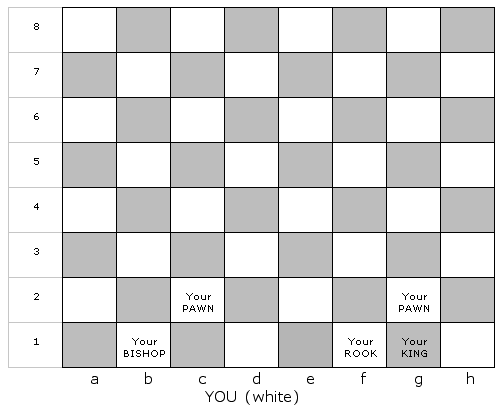
Get it? The king moves two spaces towards the rook, and the rook goes right next to the king, but on the opposite side that it started on. And voilá! You can also castle this way, from here…
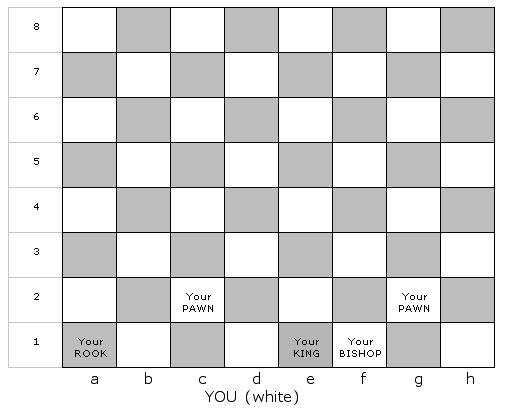
to here:
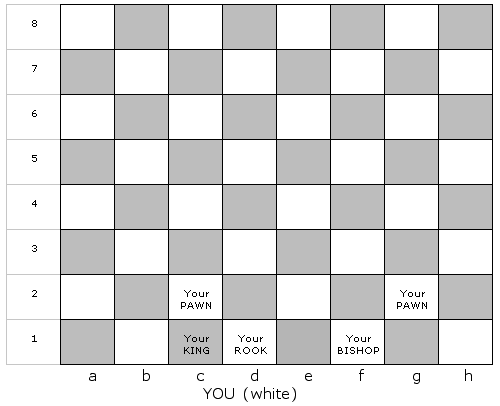
At the risk of sounding repetitive, you moved your king two spaces left, and moved the rook around to the box right next to it on the opposite side of where it started. By the way, the proper way of castling is to move the king first, and then the rook.
Well, we are exhausted. Yes, chess has a lot of rules, but once you get by them, you're pretty much living easy. So good luck, and again, practice practice practice! P.S.- If you end up sucking at chess, just try learning to speak French. Then you can sound snotty and superior anyway.
Recommended Resource: Chessgames.com
Illustrations provided by Julie Yu Chin Liu and are 2000, SoYouWanna.net, Inc.


